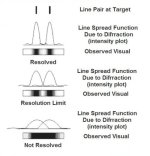H
henrya
Guest
I'm thinking that some of what Bryan is describing has to do with eliminating "non-image-forming light" from the scope. Lots of extra light bouncing around in the optical path will lower contrast, blocking that light will maintain contrast. The result of eliminating non-image-forming light will be a greater ability of the viewer to see fine detail at the target.
I have noticed that very few BR shooters around here use a shade on their scope. (I use one all the time.) No photographer I know of would expect the best performance from their camera lenses used without proper shading. This even with the very best coatings on the glass and the very best internal anti-reflection measures.
The effect of "stopping down" or placing a smaller aperture in the light path will increase the depth of field (more of the object area in apparent focus). I wonder if some of the effect observed of "clearing up the view" might be caused by the covering of slight mis-focus of the target. On the other hand, and generally speaking, a brighter view would seem to help most folks see better through their scope.
I have noticed that very few BR shooters around here use a shade on their scope. (I use one all the time.) No photographer I know of would expect the best performance from their camera lenses used without proper shading. This even with the very best coatings on the glass and the very best internal anti-reflection measures.
The effect of "stopping down" or placing a smaller aperture in the light path will increase the depth of field (more of the object area in apparent focus). I wonder if some of the effect observed of "clearing up the view" might be caused by the covering of slight mis-focus of the target. On the other hand, and generally speaking, a brighter view would seem to help most folks see better through their scope.



